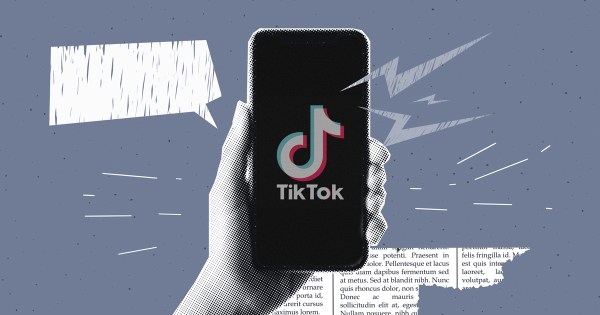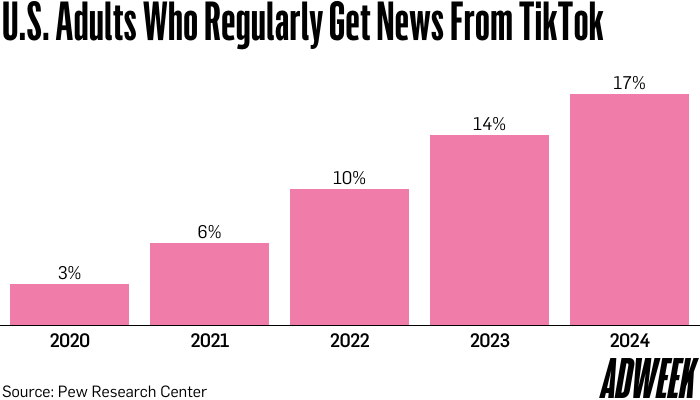Publishers Migrate TikTok Audiences to Other Platforms Ahead of Potential Ban

With the fate of TikTok suspended on a Supreme Court ruling, news and entertainment editors are taking steps to prepare for a social media landscape without the popular vertical video app.
To do this, they are diversifying where they post, migrating their audiences to other platforms and allocating more resources to promising channels, such as YouTube Shorts, according to interviews with executives from NowThis, The Washington Post, The Daily Mail, Dotdash Meredith, and Gannet.
“There is understandably an increased focus on TikTok right now, but adapting to platform changes is only part of the job in media,” said Leah Wyar, group president of entertainment, beauty and style at Dotdash Meredith. “Everything will readjust.”

Diversify their distribution
The best time to start planning for a potential TikTok ban was several years ago, said Micah Gelman, video director at the Washington Post.
The Post was the first major news publisher to establish a strong presence on the platform, where it now has nearly 2 million followers.
But the news organization, like others, has focused from the start on distributing its vertical video content across various platforms, including Instagram Reels, YouTube Shorts and Snap. The move reduced its reliance on a single channel, making TikTok’s loss less consequential.
“The reality is that all publishers are largely in this together,” said Sharon Mussali, executive director of NowThis. “If you’re posting social content, you’re probably doing it across multiple platforms. So if one of them leaves, we all suffer to the same degree.
Likewise, the Daily Mail has also been working to strengthen its vertical video presence across a variety of relevant apps.
The publisher has 17.6 million followers on TikTok, making it the largest news organization on the app. And because of its British roots, the publisher will still be able to use TikTok to reach audiences outside the United States, further mitigating the potential ban.
Despite these safety nets, it has also worked to grow its audience on other platforms where users flock to find vertical videos, according to Tony Manfred, global head of video.
“We are well-positioned if TikTok were banned, because we already excel on platforms poised to benefit from such a transformation,” Manfred said.
Migration of audiences elsewhere
In addition to developing audiences on other platforms, news publishers have worked to introduce and guide their viewers to these other media.
At The Post, the publisher released videos specifically designed to highlight its presence on apps like YouTube Shorts, Reels and Snap, according to Gelman.
“As we cover the Supreme Court hearings on TikTok, we have been messaging the public about other places they can find us,” Gelman said. “We were more explicit as the deadline got closer.”
To emphasize that The Post is a cross-platform creator, it rebranded its TikTok team last April, changing its title to The Washington Post Universe. The editor revealed the new name with a special video filmed during last year’s eclipse.
“Regardless of any potential ban on TikTok, we will continue to engage audiences and build communities with the content they want, where they want it,” said Annemarie Dooling, vice president of audience experience at Gannett.
Adopt YouTube Short Films
The disappearance of TikTok offers its competitors the opportunity to capture the new audience share available, but no application is ready to directly capture this audience.
Yet while Snap and Instagram Reels are both compelling alternatives, YouTube Shorts could prove to be an underestimated threat, according to Gelman.
In fact, according to an agency source, recent social listening revealed that YouTube Shorts is the most mentioned platform in terms of where creators are looking to post and consume TikTok-like content if the ban is implemented.
YouTube has a larger audience than Instagram or Snap, and it’s easier to monetize directly. His audience is also just that: an audience. People come to YouTube hoping to watch videos, which makes it a very intentional and therefore valuable audience.
YouTube also attracts a particularly young audience, especially as it gains importance as a source of children’s programming, according to Wyar. Efforts to ban children under 16 from social media, such as those underway in Australia, also tend to exclude YouTube.
The Post, in fact, saw its Shorts audience grow even faster than its TikTok followers, according to Gelman.
“Instagram will always be important, but the revenue and audience opportunities are greater on YouTube,” Gelman said. “That’s where The Post has seen the most growth.”





